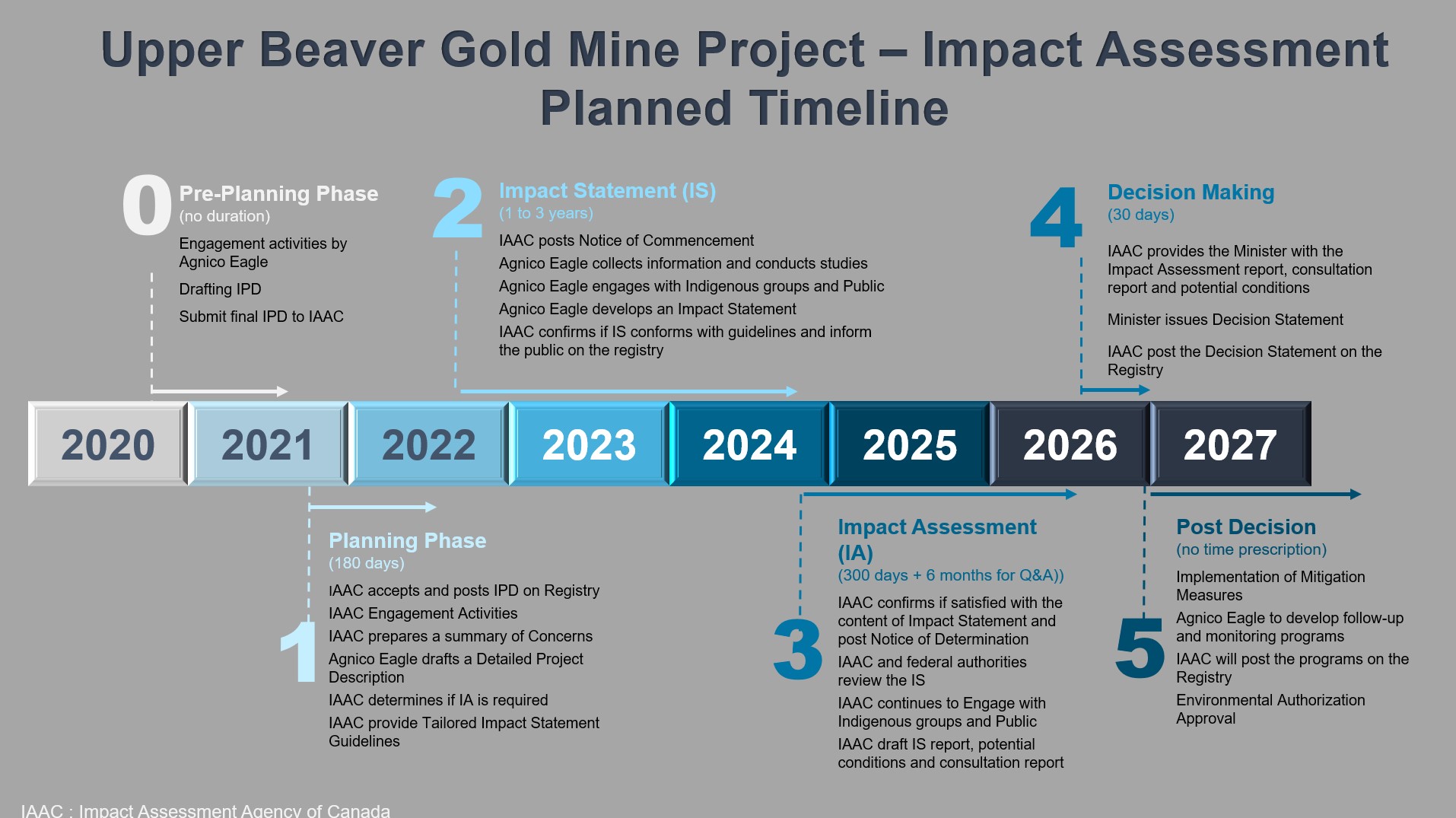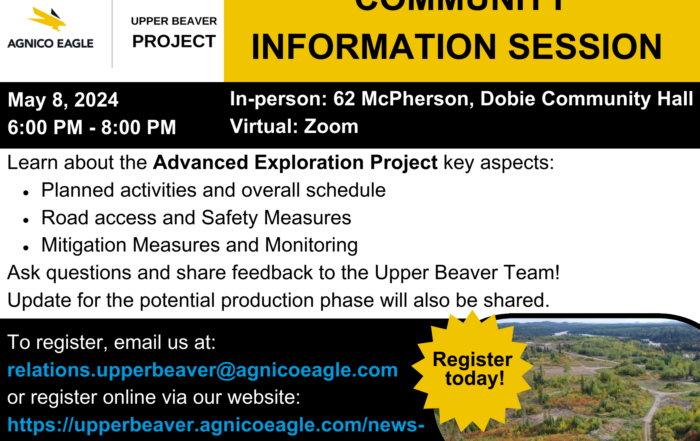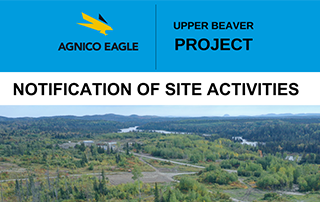We assess potential impacts and risks associated with our activities across the whole lifecycle of our projects and operations, based on our sustainability values.
Purposeful Design
Agnico Eagle is purposefully designing all phases of the Upper Beaver project to have the smallest environmental footprint and disturbance reasonably possible.
Agnico Eagle and previous project owners have been conducting baseline environmental investigations on the Upper Beaver project site since 2010. The project is currently being evaluated from an environmental perspective, as well as from exploration and engineering perspectives.
Environmental studies to date or currently underway include investigations of physical and biological setting; climate, air quality, noise and light; aquatic environment; terrestrial environment, surface water and groundwater; and Species at Risk.
Baseline Studies
Environmental baseline studies are conducted at the outset of most projects in order to determine the initial environmental conditions of an area prior to development activities – and to confirm the impact of a project and the mitigation measures required. Ongoing sampling and monitoring of air, water, soil, animal and plant life are key to establishing an environmental baseline and assessing overall impacts throughout the life cycle of a mining project, including post-closure monitoring.
Typically, an impact assessment requires baseline studies of water quality, air quality, noise and light, fish/habitat, vegetation, wildlife and wildlife habitat, archaeology and cultural heritage, socio-economic, traditional knowledge and land use. These studies can require up to two years of data, depending on the project.
Environmental Authorizations
Numerous environmental authorizations and approvals are required for advanced exploration projects and mine developments.
In Ontario, the provincial government requires environmental studies and permits, as well as public consultations, for all advanced exploration and mine development projects based on the rules, regulations, guidelines and policies found in the: Ontario Environmental Assessment Act, Mining Act, Ontario Water Resources Act, Environmental Protection Act, Lakes and Rivers Improvement Act, Public Lands Act and the Ontario Heritage Act. Applications for projects with a potential effect on the environment are posted on Ontario’s Environmental Registry opens a new window, providing the public the opportunity to submit comments directly online.
In Canada, these projects may also require federal approvals related to the Fisheries Act, Canada Navigable Waters Act and Explosives Act, pending additional regulatory guidance. Some projects may be subject to a federal Impact Assessment (IA), depending on expected impacts of the project.
Impact Assessment
When a project meets specific conditions and have designated activities, the proponent is required to submit a project description to the Impact Assessment Agency of Canada (IAAC).
This initial project description submission initiates the Planning phase, which is the first step of a federal impact assessment process. The prime focus of the Planning phase of the impact assessment process is to engage with the public and Indigenous peoples on relevant views and knowledge, determine whether a project requires an impact assessment, and, if an impact assessment is required, develop planning tools to guide the process including the Tailored Impact Statement Guidelines*.
In December 2021, the IAAC confirmed that a federal impact assessment under the Impact Assessment Act is required for the Upper Beaver Gold Project.
From January to March, the Agency conducted its 40-day public comment period on the draft Tailored Impact Statement Guidelines (TISG) and the draft Public Participation Plan for the Upper Beaver Project and has invited the public and the Indigenous groups to provide feedback on both documents. The Guidelines outline the specific factors to be considered in the assessment of the project and provide direction to the proponent on the information and studies required in its Impact Statement.
In April 2022, the IAAC has released the Notice of Commencement of an Impact Assessment. Agnico Eagle will then proceed in collecting all required information and conducting the relevant studies to evaluate the potential effects and impacts of the project in accordance with the requirements outlined in the TISG. There will be various opportunities for the public and Indigenous groups to participate.
The Upper Beaver mine project may also require completion of one or more provincial environmental assessment processes, depending on the final project design.
For more information on our public and Indigenous engagement activities see the Community Engagement section.
For information and the latest updates from the IAAC on the Impact Assessment process of the Upper Beaver Gold Project, visit iaac-aeic.gc.ca opens a new window.
*The Impact Assessment Process – Overview of the Impact Assessment Act, visit iaac-aeic.gc.ca opens a new window.






